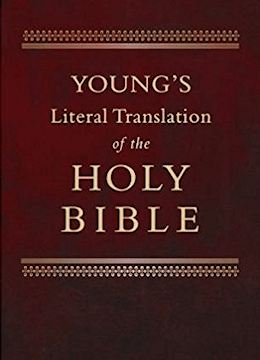Textus Receptus Bibles
Young's Literal Translation 1862
| 27:1 | A son of twenty and five years `is' Jotham in his reigning, and sixteen years he hath reigned in Jerusalem, and the name of his mother `is' Jerushah daughter of Zadok. |
| 27:2 | And he doth that which is right in the eyes of Jehovah, according to all that Uzziah his father did; only, he hath not come in unto the temple of Jehovah; and again are the people doing corruptly. |
| 27:3 | He hath built the upper gate of the house of Jehovah, and in the wall of Ophel he hath built abundantly; |
| 27:4 | and cities he hath built in the hill-country of Judah, and in the forests he hath built palaces and towers. |
| 27:5 | And he hath fought with the king of the sons of Ammon, and prevaileth over them, and the sons of Ammon give to him in that year a hundred talents of silver, and ten thousand cors of wheat, and of barley ten thousand; this have the sons of Ammon returned to him both in the second year, and in the third. |
| 27:6 | And Jotham doth strengthen himself, for he hath prepared his ways before Jehovah his God. |
| 27:7 | And the rest of the matters of Jotham, and all his battles, and his ways, lo, they are written on the book of the kings of Israel and Judah. |
| 27:8 | A son of twenty and five years was he in his reigning, and sixteen years he hath reigned in Jerusalem; |
| 27:9 | and Jotham lieth with his fathers, and they bury him in the city of David, and reign doth Ahaz his son in his stead. |

Young's Literal Translation 1862
Young's Literal Translation is a translation of the Bible into English, published in 1862. The translation was made by Robert Young, compiler of Young's Analytical Concordance to the Bible and Concise Critical Comments on the New Testament. Young used the Textus Receptus and the Majority Text as the basis for his translation. He wrote in the preface to the first edition, "It has been no part of the Translator's plan to attempt to form a New Hebrew or Greek Text--he has therefore somewhat rigidly adhered to the received ones."